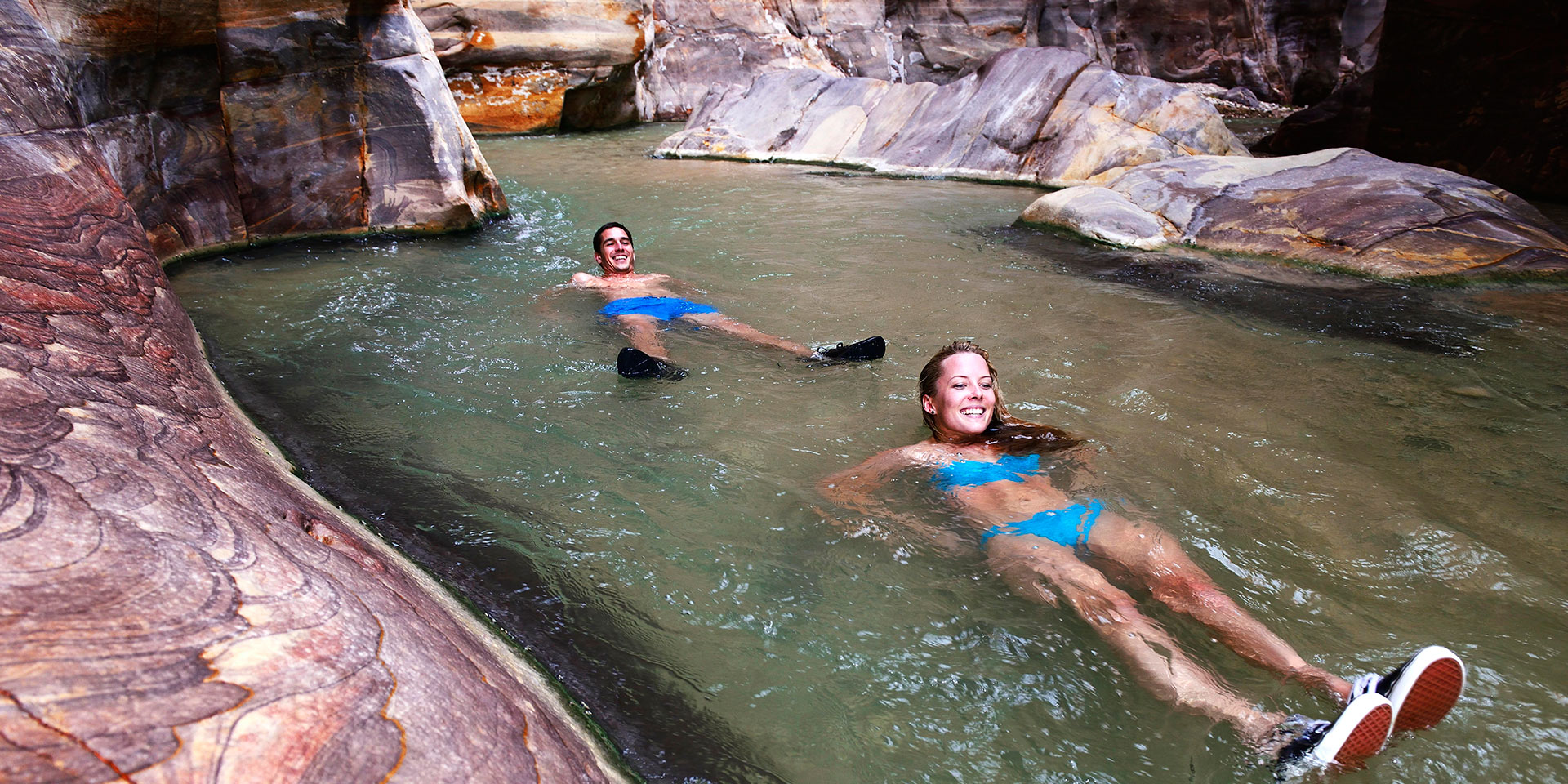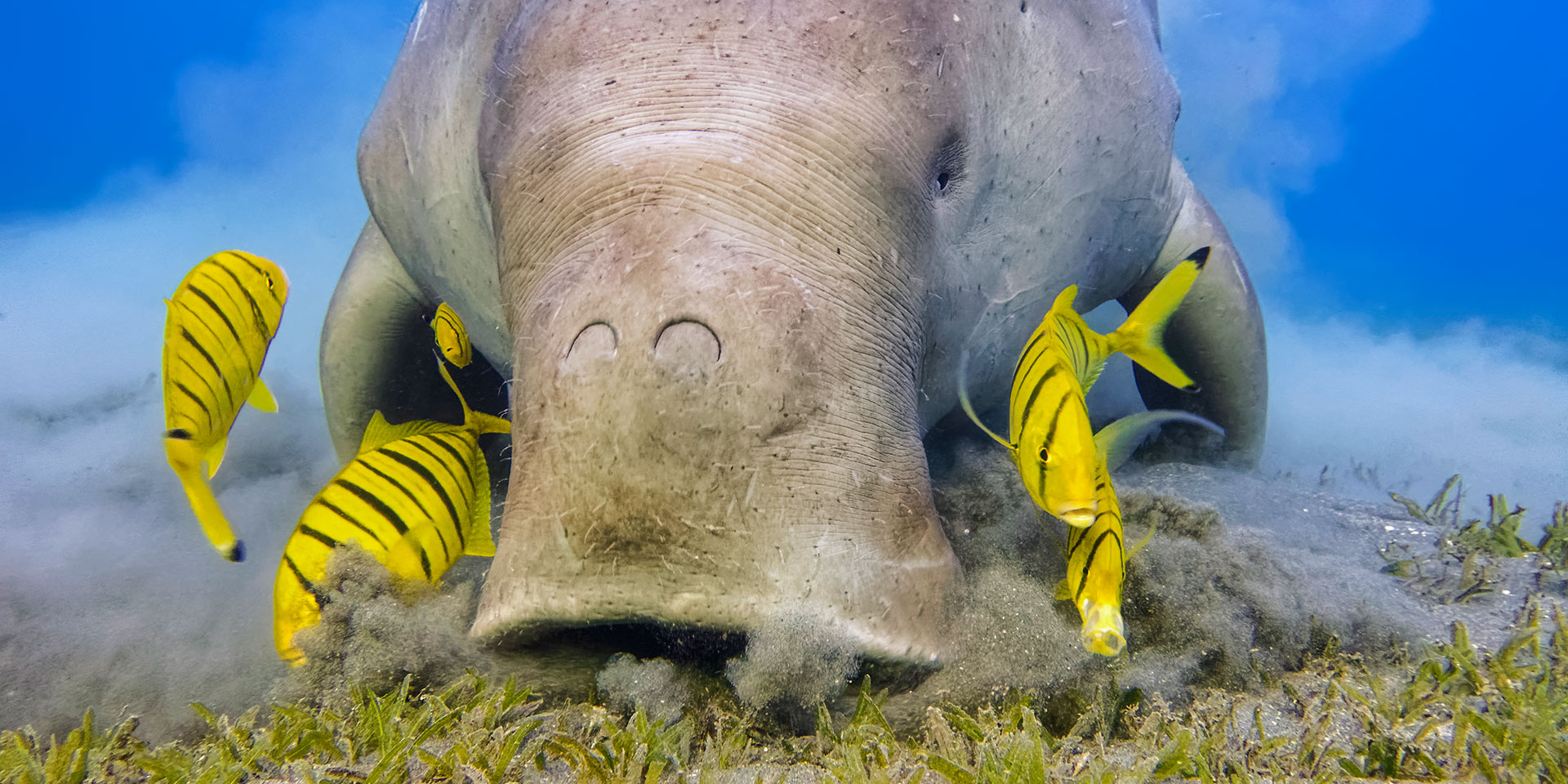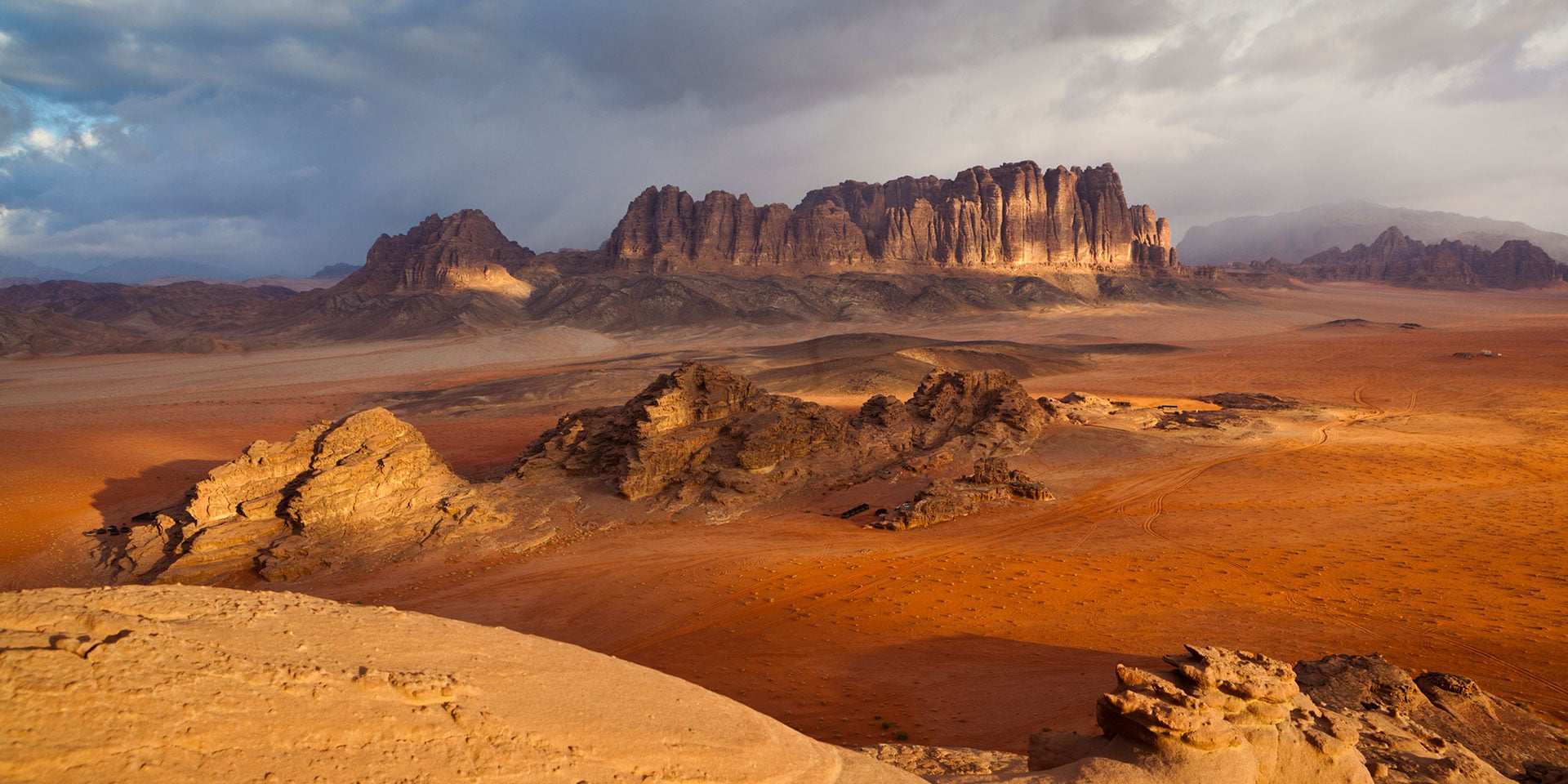A favorite among intrepid travelers, Jordan makes for a worthy introduction to the Middle East. With hauntingly beautiful desert landscapes, ancient ruins, lush oases, picturesque coastal towns, hilltop villages dotted with farms and a wealth of history that lives on in awe-inspiring UNESCO World Heritage Sites, Jordan charms visitors with the sheer diversity of its experiences.
And the people? The generosity of Jordanians, whether in cities like Amman or rural areas, is legendary.
While the ancient Nabataean city of Petra might be what brings most visitors to the country, there is certainly more to discover in Jordan.
1. The Martian Landscape of Wadi Rum
Wadi translates to “desert valley,” and the stark, seemingly infinite landscape of orange-red dunes, weather-sculpted sandstone cliffs, jarring rocks, bridges, arches and gorges in Wadi Rum can make you feel like you’re on another planet.
T. E. Lawrence, or “Lawrence of Arabia” is believed to have named his autobiography “The Seven Pillars of Wisdom” as a nod to Jabal Al Mamzar, a massive rock formation with seven folds, after he spent time living in Wadi Rum during the Arab Revolt. This UNESCO World Heritage Site is also home to ancient rock carvings and archaeological relics.
Visit on a day trip from Aqaba or Petra, and don’t miss the sunset; the effect of the changing light on the Martian landscape is nothing short of spectacular. You can also go trekking, rock climbing and camel and horse riding in certain parts.
2. Canyoning in Wadi Mujib

For a dose of adventure, visit Wadi Mujib in the Mujib Biosphere Reserve, the lowest nature reserve on earth at 1,365 feet below sea level and home to diverse species of plants and wildlife such as the Nubian ibex.
In Wadi Mujib, you can go on guided hikes navigating your way through deep gorges, hiking, scrambling and climbing over rocky terrain, wading through chest-high rivers, abseiling (rappelling) down waterfalls and sliding down smooth sandstone canyon walls.
Choose from the different trails that begin at the Visitor Center, such as the Siq Trail and Malaqi Trail, depending on your fitness levels, seasonal suitability and availability of guides.
3. Roman Ruins in Jerash
A visit to the Greco-Roman ruins of Jerash, just 31 miles from Amman, is like stepping through a time portal; an experience that is sure to fascinate whether or not you’re a history buff. Jerash is one of the most well-preserved Roman cities in the world and was continuously inhabited for 6,500 years after it was founded by Alexander the Great in 331 B.C.
On a leisurely wander through its colonnaded streets, public squares, fountains, grand amphitheaters and city walls, it’s easy to imagine the city’s days of glory under Roman rule, back when it was called Gerasa. Monuments include the commemorative Hadrian’s Arch, South Gate, Temple of Zeus, South Theater, Temple of Artemis and the North Theater.
Hire a local guide at the entrance to learn more and visit the best vantage points. Don’t miss the daily performance at the hippodrome; the reenactment features battle formations by the Roman Army, gladiator fights and a chariot race around the hippodrome amid much cheering.
4. Underwater Adventures in the Red Sea

Join holidaying Jordanians on the azure coastline of Aqaba, Jordan’s only seaside resort town, to experience its abundant aquatic life and truly relax. You can spend your days diving, snorkeling and doing water sports such as windsurfing and jet-skiing.
The clear, nutrient-rich waters teem with rich marine life and are home to sea turtles, whale sharks, dolphins, lobsters, clown fish and manta rays, and the temperate climate makes this a great year-round destination.
The area’s coral reefs and dive sites such as those in the Red Sea Marine Peace Park are among the most beautiful in the world, and dive centers are equipped with top-notch equipment and expert instructors. A great way to unwind in Aqaba after a day of adventures is to hire a boat to sail around the calm waters as the sun dips below the horizon.
5. Float in the Dead Sea
No trip to Jordan is complete without a visit to the Dead Sea, the lowest point on earth at more than 1,412 feet below sea level. Several rivers, including the Jordan River, drain into the Dead Sea, becoming landlocked and eventually evaporating, leading to a high concentration of salts and minerals.
While you cannot swim here due to the hypersalinity, the high buoyancy means you’ll be floating on your back quite effortlessly. The minerals in the mud are believed to reinvigorate your skin, and spas along the coast offer mudpacks that you can apply before you get in. Alternatively, simply scoop up some mud and slather it on.
6. Hiking and Wildlife at Dana Biosphere Reserve
Visit the Dana Biosphere Reserve, the largest in Jordan, to hike in this spectacular landscape of jagged sandstone, limestone and granite cliffs, dry wadis, rugged rock formations and farmland. A hotbed of biodiversity, the area is home to several rare plant and animal species, including endangered ones such as the Syrian wolf and the lesser kestrel.
Local guides, many of whom grew up in the area’s farming communities, are available to take you hiking, canyoning and mountain biking while you visit Nabataean tombs, Byzantine churches, Roman ruins and other archaeological sites along the way. You can also go birdwatching or experience a safari to spot resident ibex, gazelles and red foxes.
7. Relax at Ma’in Hot Springs
Head to the cool oasis of Wadi Zarqa Ma’in, not far from the Dead Sea, to relax in the hot springs of Ma’in, 866 feet below sea level, among lush palm trees. The mineral-rich waterfalls are fed by winter rains in Jordan’s highland plains and are heated by underground lava vents in the valley. The thermal springs and waterfalls are popular for bathing and are believed to have soothing properties.




